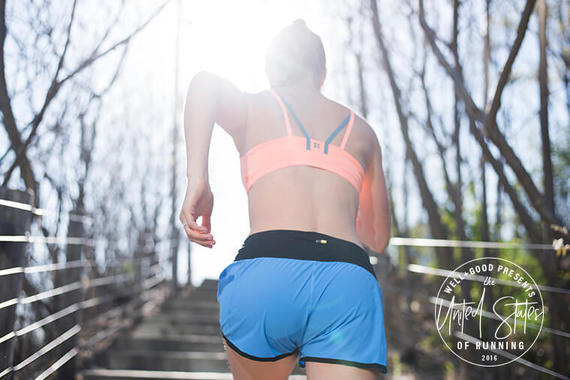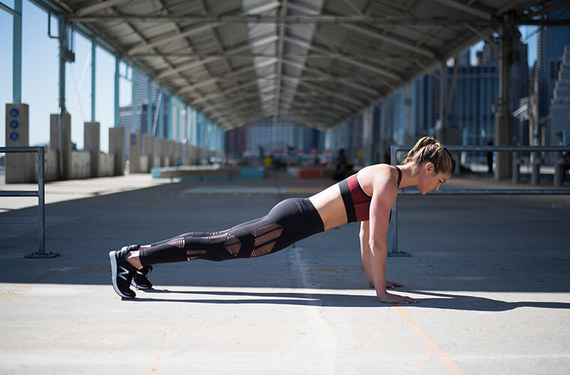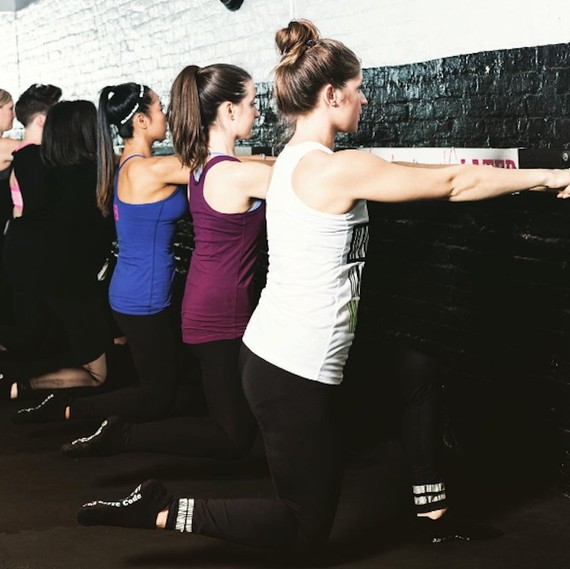There are few things as euphoric, motivating, and addicting as a runner's high. (Yes, it's real.) But as great as it would be to get that I'm-on-top-of-the-world feeling every single day, making running your sole form of fitness isn't the best idea. (Cue sad trombone.) That's because it can not only lead to injury, but also to serious burnout.
That's where cross-training comes in. The tactic, where you supplement your main activity with at least one other workout, is a bit like your friend group: You might have your best friend, but it's having a diverse squad that makes your BFF bond even stronger (and probably makes you love and appreciate that person even more).
"You have to switch things up," says Barry's Bootcamp trainer (and runner) Ingrid S. Clay. "If you do the same thing all the time, you aren't going to make any gains." In fact, studies have shown that cross-training can literally make you a better athlete, by preventing injury and improving endurance.
And best of all? Whatever your workout of choice is--yes, even barre--it can compliment your running.
Whether you're big on boot camp or love your yoga mat, here's your ultimate guide to using your favorite non-running hobby as an optimal form of cross-training.
Yoga
How it'll help your running: "I was an avid runner when I started doing yoga--I ran six miles a day religiously," says Kiley Holliday, an instructor at Pure Yoga in New York City who teaches Yoga for Runners workshops. Needless to say, Holliday knows that yoga sequences specifically designed for runners can help counteract the negative effects of pounding the pavement for long periods of time. "It serves to elongate tight hamstrings, IT bands, outer hips, and back muscles, which can alleviate the discomfort associated with running, and will increase your general range of motion. It also eases joints and corrects runners' rounded posture while encouraging a more relaxed breathing pattern." Bonus: All runners know to stretch, but few do it regularly. Hit up a yoga class and cross stretching off your daily to-do list.
The poses that'll give you the most bang for your run:
- Half-split with flexed foot (stretches hamstrings and calf muscles): From crescent lunge, slowly begin to straighten out the front leg while keeping the back knee directly in line under the hip. (Place a black under each hand or keep a gentle bend in the front leg if needed.) Then, flex the foot so the heel kicks forward, and fold as close tot he leg as possible while drawing the abdomen in.
Pilates
How it'll help your running: It's all about the core. "Runners not only benefit from the core strengthening that Pilates focuses on, but they also train muscles that support proper posture--which is essential to efficient running form and helps prevent injury," says Jen Ares-Cruz, an instructor at New York Pilates (who teaches Pilates for Runners classes), a former competitive track and field athlete, and an RRCA running coach. "Many runners over-stride, which means they land with their feet in front of their hips and their hips behind their ribs. In Pilates, we train how to effectively use the glutes so they're the power behind the run. Think of Pilates as the work that keeps the system healthy."
The moves that'll give you the most bang for your run:
- Glute bridging with hip rotations: Lying on your back, bend both knees so feet are flat on the floor. As you exhale, pull your navel to your spine and squeeze your glutes to lift your hips up. At the top of the bridge, slightly lower your right hip to the floor, without moving your knees. Change sides continually for 10 reps on each side. "This helps train the glute muscles to fire in hip extension, which most runners need more of," says Ares-Cruz. "It also helps strengthen the core and hip stability as the pelvis naturally rotates during your stride."
- Side lying leg kicks: Lying on your left side with straight legs, stack your hips and shoulders and lift your bottom waistline off the floor. Lift your top leg up so it's level with your hip. Keeping your leg level and your hip stacked, kick it forward and swing it back as far as you can without disturbing your hips. Do 10 repetitions, and on the last repetition, swing your leg back, lift it up another inch, and pulse for a count of 10. "This exercise focuses on the lateral hip muscles that not only help keep your hips level when you run, but also help protect your knees from injury," says Ares-Cruz.
- Leg pull front support: Start on all fours and reach back one leg at a time, so you're in a plank. Make sure your shoulders pull away from your ears (in other words, not hiked up) and your glutes are squeezing. Without moving your hips, lift your right leg up and pulse it up three times in a row. Repeat on the left side. Rest, then do two more sets. "Not only is this a plank, which strengthens your core, it also helps strengthen your upper body," says Ares-Cruz.
Barre
How it'll help your running: All those tiny pulses at the barre can lead to big gains on the pavement. "Barre classes are great for runners because the isometric movements help build up strength and endurance," says Ariana Chernin, co-founder and CEO of The Barre Code in Chicago (and a lifelong runner). "Barre has given me stronger muscles, and has led to better race times. Adding two to three barre classes a week to your running routine will work the smaller muscles around your hips and knees that help support joints for longer, injury-free running."
The positions and moves that'll give you the most bang for your run:
- Pencil: Bring your feet together, press the thighs together, rise up on your highest heels, and sink down your imaginary wall, aligning the shoulders, hips, and heels. Activate the core by pulling the naval up and in toward the spine for stabilization. Do 30-second sets of downward pulses, hip tucks, and inner thigh squeezes.
- Wide second: Step legs out into a wide straddle position and slide down an imaginary wall, keeping the shoulders stacked over the hips and the hips tucked under. Do pulses, wraps, and alternate high-heels to work deep into the inner thighs.
- Chair: Walk all the way up to the barre so the belly touches the barre. Extend the arms long and open the chest, then slide down an imaginary wall, making a 90-degree angle from ankle to hip and hip to hands. Press the palms down onto the barre, keeping the back flat and the hips tucked under. Do pulses, inner thigh squeezes, and heel lifts.
- Lunge: Start with the feet under the hips with open parallel legs. Step one leg back and gently take the back knee to the mat, aligning the front knee over the front ankle and the back knee under the hips. Shoulders should be over the hips, and hips should be tucked. Feet should always be on separate tracks. Do single lunges or alternating lunges.



